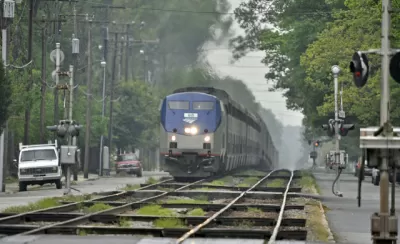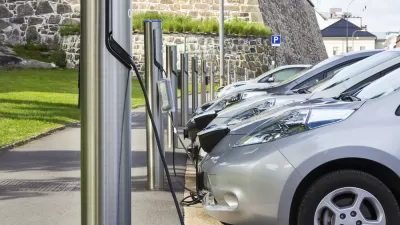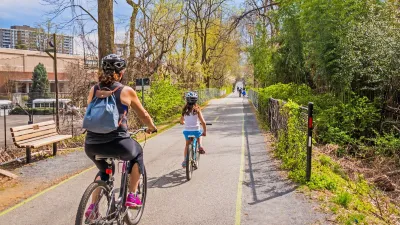The proposed bill keeps road funding almost intact while cutting funding for electrification, rail, and community development.

Despite the "historic" level of funding for transit included in the current infrastructure bill, Kea Wilson writes that the similarly "historic funding for drivers" undercuts any potential progress. According to Wilson, writing before the "Infrastructure Investment and Jobs Act" passed the Senate last week, "many sustainable transportation advocates were troubled by top-line funding ratios that would give transit a smaller percentage share of federal dollars than at any point since the Nixon administration, slash 95 percent of funding for a program that would reconnect BIPOC communities sundered by highways, and threw only crumbs to ending the accelerating roadway safety crisis."
Since the 1980s, "a handshake agreement in Washington has essentially guaranteed that drivers get 80 percent of federal infrastructure funding and transit agencies get 20 percent." Despite hopes that the new bill would tip the scale more towards transit, the current agreement does the opposite, "landing at roughly 82/18 — a slap in the face to advocates who hoped to see drivers split the pie 50/50, at the least." According to Renae Reynolds, executive director of the Tri-State Transportation Campaign, "it’s a suicide mission that prioritizes cars and highways over more equitable and sustainable forms of transportation."
Wilson writes that "[t[he transit category lost about 54 percent of proposed stimulus funding as it went through the partisan sausage-grinder; the 'roads' category, by contrast, lost about 8 percent." Meanwhile, funding for electrification programs has been slashed by 90 percent from the original proposal and "new roadway safety spending could easily be undercut by the continuation of bad roadway policy."
FULL STORY: Infrastructure Deal ‘Worst Ratio for Transit Funding Since Nixon’

Alabama: Trump Terminates Settlements for Black Communities Harmed By Raw Sewage
Trump deemed the landmark civil rights agreement “illegal DEI and environmental justice policy.”

Study: Maui’s Plan to Convert Vacation Rentals to Long-Term Housing Could Cause Nearly $1 Billion Economic Loss
The plan would reduce visitor accommodation by 25% resulting in 1,900 jobs lost.

Why Should We Subsidize Public Transportation?
Many public transit agencies face financial stress due to rising costs, declining fare revenue, and declining subsidies. Transit advocates must provide a strong business case for increasing public transit funding.

Wind Energy on the Rise Despite Federal Policy Reversal
The Trump administration is revoking federal support for renewable energy, but demand for new projects continues unabated.

Passengers Flock to Caltrain After Electrification
The new electric trains are running faster and more reliably, leading to strong ridership growth on the Bay Area rail system.

Texas Churches Rally Behind ‘Yes in God’s Back Yard’ Legislation
Religious leaders want the state to reduce zoning regulations to streamline leasing church-owned land to housing developers.
Urban Design for Planners 1: Software Tools
This six-course series explores essential urban design concepts using open source software and equips planners with the tools they need to participate fully in the urban design process.
Planning for Universal Design
Learn the tools for implementing Universal Design in planning regulations.
Caltrans
Smith Gee Studio
Institute for Housing and Urban Development Studies (IHS)
City of Grandview
Harvard GSD Executive Education
Toledo-Lucas County Plan Commissions
Salt Lake City
NYU Wagner Graduate School of Public Service





























